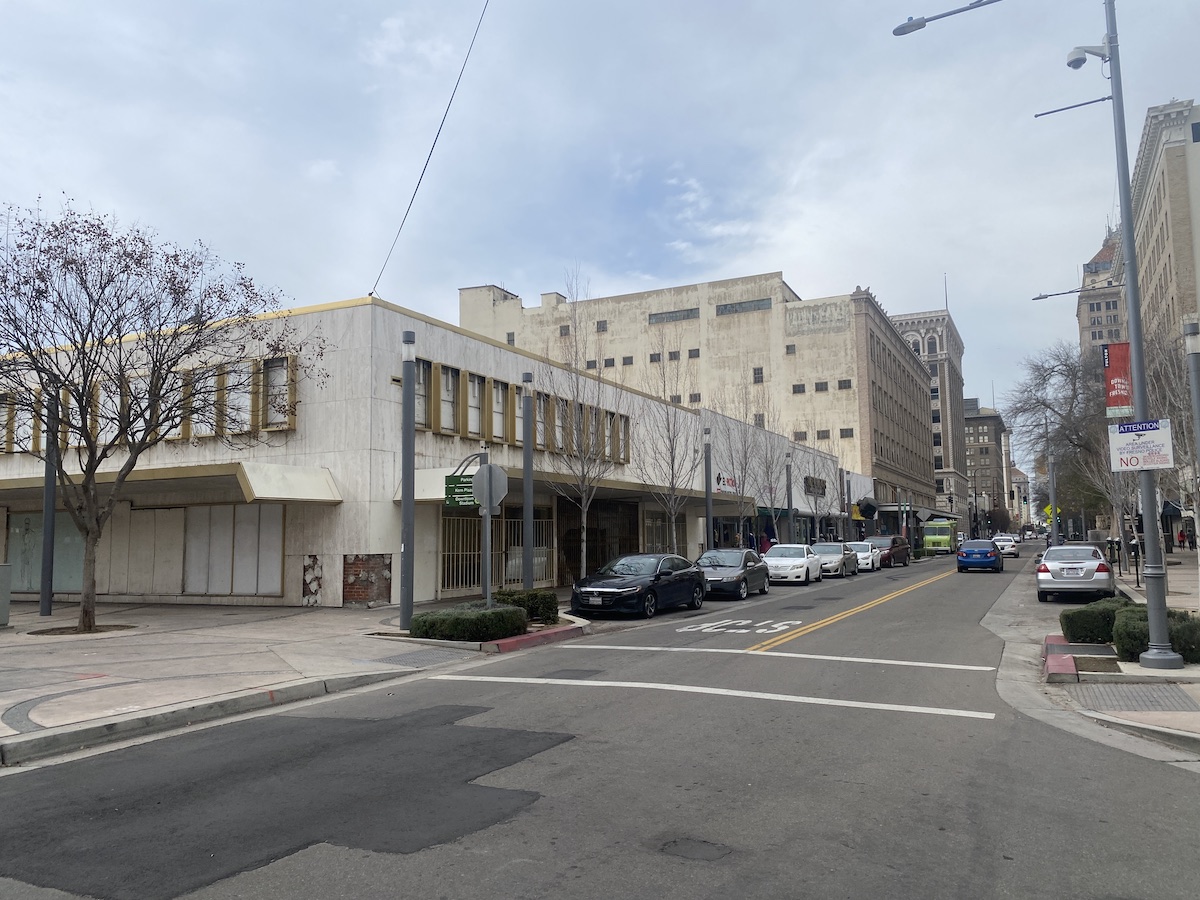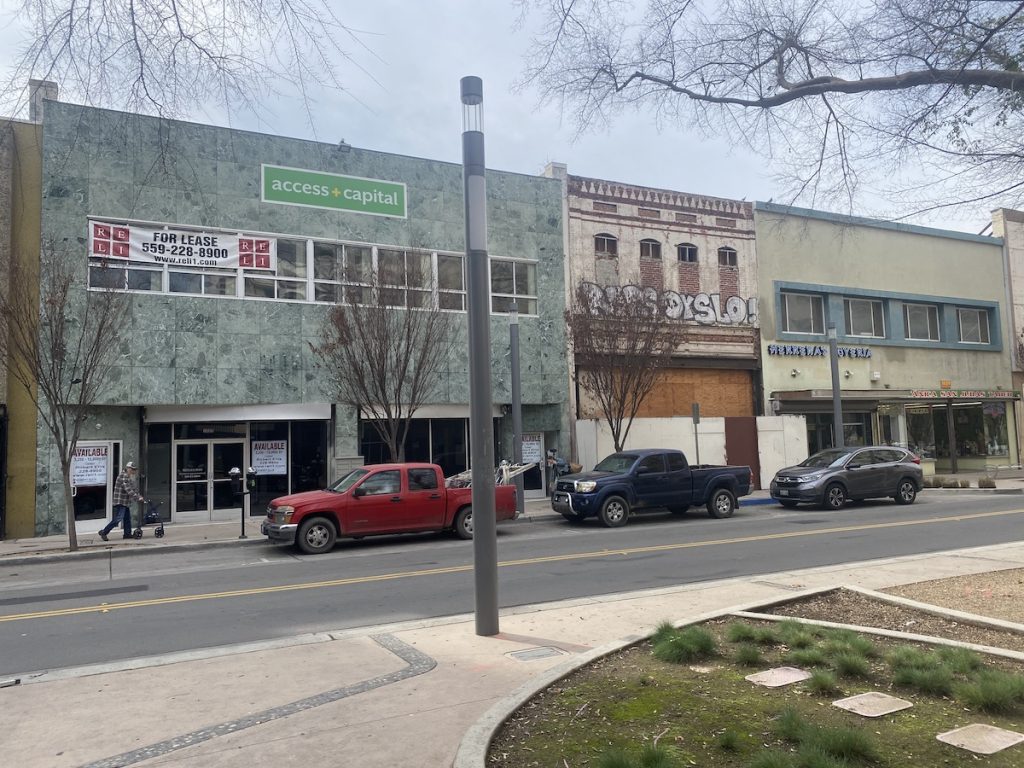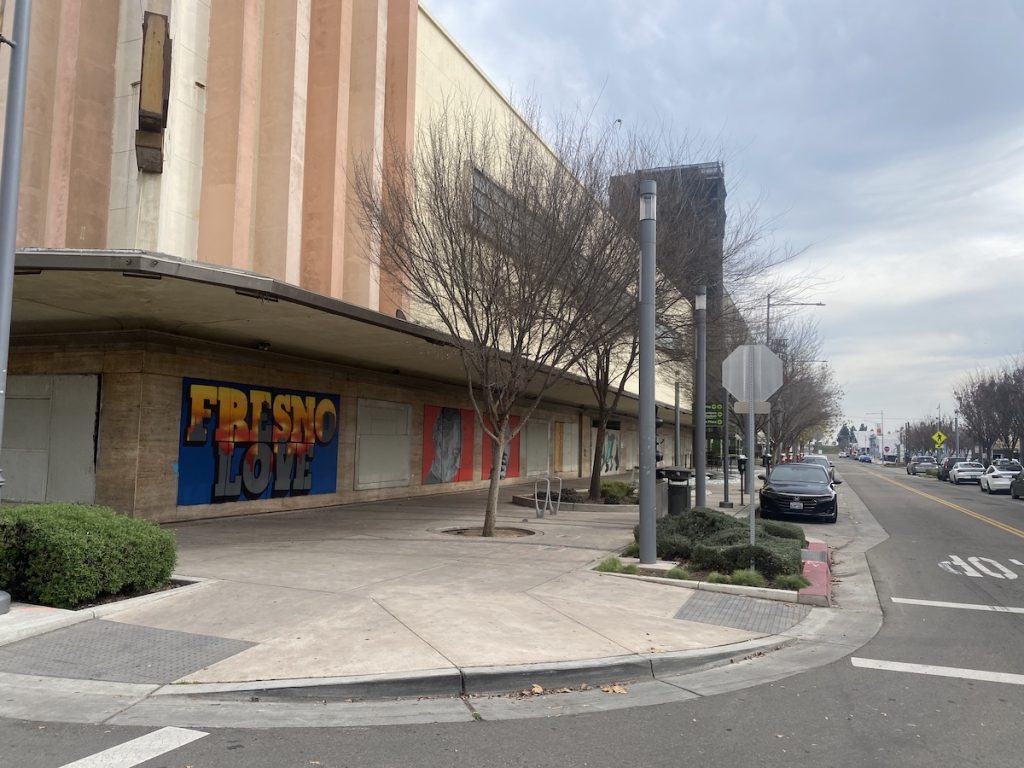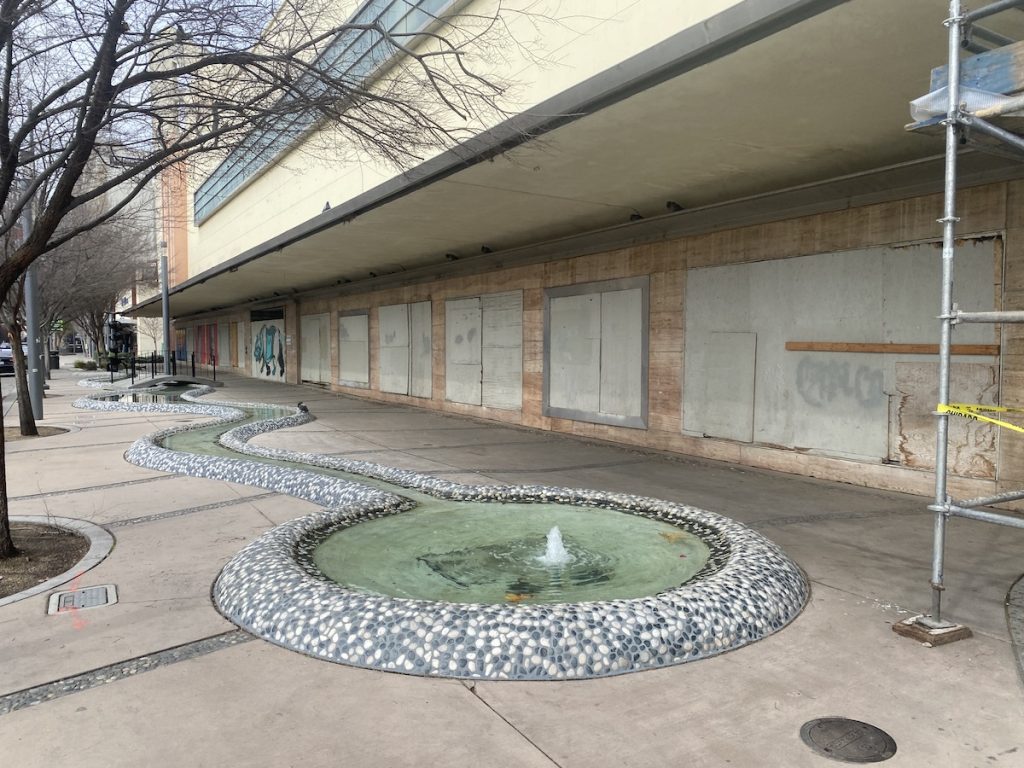Are Cars the Answer? The Fresno Case Study

Once again, our mayor has taken to the Independent to air his concerns over State Street, and as usual those concerns are at odds with the other council members, the general public, and all available facts and studies.
But let me take a step back and talk about something positive. Over the last month, Strong Towns Santa Barbara, the local advocacy group I founded and help run, has been hard at work writing public comments, attending meetings, and passing out State Street posters. That last item is something I’m especially proud of. One of our members created a beautiful poster featuring the slogan “Bike, Walk, Thrive” with the goal of getting business owners up and down the promenade to hang them in their windows in support of a car-free and bike-friendly State Street. We’ve talked to over 40 business owners, from clothing stores to restaurateurs, and have heard one overwhelming response: “Yes, please!” Next time you walk or bike up the street, keep an eye out for the orange and blue posters!
Now on to the mayor’s claims. In his article, he says that “the lack of traffic downtown is taking its toll,” implying that the lack of cars is responsible for empty storefronts. This ignores the fact that every single parking space that existed before the pandemic still exists today – there has not been street parking on State in decades. Even so, the argument – that if people could drive by and park directly in front of stores, more people would shop – is commonplace. This rationale is used time and time again, despite the fact that malls surrounded by vast purpose-designed parking lots have been failing across America for several decades; we needn’t look further than La Cumbre Plaza to see this. Still, some argue that the dynamics are different for main streets and that they need car access to thrive.
Fresno, California, thought the same. In the 1960s, they closed their main street, Fulton Street, to cars to create a pedestrian-only promenade. They hired world class architects who included fountains, modern art sculptures, benches, and myriad trees into the design. At first, Fulton Street was a pedestrian paradise, but over time, cracks began to show. By the 2010s, most stores were vacant. In an effort to revitalize, the city decided to bring back cars, just as Mayor Rowse proposes we do. They tore out the promenade in 2016, opening the street once again to traffic and parking.



Has the change worked? I happened to be in Fresno twice last month, and I visited Fulton Street to find out. The pictures included in this piece are what I saw.
Obviously, Fresno isn’t the perfect comparison for Santa Barbara; for one, it’s not a tourist hotspot like our town. However, it has a metro-area population of one million, which should offset this difference. Instead, Fulton Street has a vacancy rate of around 50%.
So what’s happening here? Clearly, both the pedestrian plaza and bringing back cars failed. What we need to understand is that the nature of retail has changed. With online shopping, people don’t buy things like they used to.
Also, a study on pedestrian-only streets showed that 89% of them have failed. However, the authors noted that of the 11% that have been successful, “80% are in areas with under 100,000 people… [successful malls were] near the beach, near a university, and/or a major tourist location.” Also, successful malls have been multimodal, rather than pedestrian only, with ample housing in the vicinity.
In other words, if we want State Street to succeed, we can’t follow old models. We must learn from events in Fresno (and other cities). Making State Street a pedestrian-only mall as some have proposed or bringing cars back as Mayor Rowse wants to do would both likely lead to the failure of downtown. Instead, the future of State Street should include housing, multimodal options like transit and cycling, and other attractions to bring people in. More people should live within walking/cycling distance of State Street, and the street should be so accessible and attractive that it’s easier and more pleasant for people to shop there than online.
Instead of looking toward the past, which is gone and cannot return, let’s look toward the future to create a lasting and beautiful place in the heart of our city.







You must be logged in to post a comment.